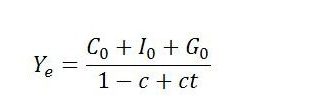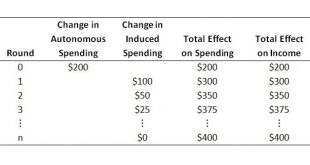Long-time readers will be aware that, from time to time, heteconomist veers off the subject of economics. This is one of those times. There is little to no economics content in the present post. Rest assured that an economics focus will return in the near future. It would be better to hop off now if idle distractions are not your thing. For readers who made it over the fold, congratulations, you are the heart and soul of what makes heteconomist what it is: namely, a blog with a sometimes...
Read More »Polynomials to the Rescue in the Strange Case of Busted Bets Plus One
Some days, when things seem quiet on the economic front, and even occasionally when they don’t, minds can wander to less weighty matters and become momentarily lost in daydreams of yesteryear; a heady retreat, for instance, back to high school math class one barmy afternoon, sunshine streaming through the windows facing on to Main Quad, with the keener students engrossed in an exploration of the wonders of polynomials; back to a delirious springtime trance interrupted, rudely, by one of...
Read More »Unfulfilled Potential
A monetarily sovereign government is one that issues its own currency and is the currency’s sole issuer. Ideally, it allows the currency’s value to float in relation to other currencies in foreign exchange markets, meaning its currency is not convertible at a fixed rate into either another currency or a commodity (other than possibly the commodity labor-power through the provision of a job guarantee). Although this ideal maximizes policy space, a government that promises convertibility can...
Read More »Short & Simple 20 – Graphing the Income-Expenditure Model
It is easy to represent the ‘income-expenditure model’ in a graph. Some people find this helpful as a visual aid to understanding; others, not so much. For those who find graphs confusing, this post can safely be ignored. In terms of economic meaning, it does not add much to what has already been explained. But for those who are comfortable with graphs, they can be a handy tool for illustrating or thinking through the logic of a model. We have seen that, by accounting identity, actual...
Read More »Short & Simple 19 – Sectoral Balances in a Closed, Demand-Determined Economy
We have seen that the ‘income-expenditure model’ combines key macro identities (introduced in parts 7 and 15) with particular behavioral assumptions to provide a theory of income determination (considered in parts 16 and 18). The behavioral assumptions relate to causation. The causation envisaged in the income-expenditure model has implications for the sectoral balances, some of which are the focus of the present post. Recall that total leakages must equal total injections: S + T = G + I...
Read More »The Social Economy and the Potential Inherent in Currency Sovereignty
In any society, of whatever configuration, production at a given point in time is limited by certain ‘real’ (meaning non-monetary) factors. Notably, a society’s productive activity will always be limited by access to natural resources, the current state of its technology, and the skill, strength, size and imagination of its people. These and similar factors determine the absolute productive potential of a society. At a given point in time, these factors would apply even if, hypothetically,...
Read More »Short & Simple 18 – Income Determination in a Closed Economy
In this and upcoming parts of the series, we will look in a little more detail at the ‘income-expenditure model’. The foundations of the model have been introduced in the previous two parts (here and here). We have seen that, within the model, equilibrium output is determined by two main factors: the level of autonomous expenditure (denoted A); the marginal propensity to leak (denoted α). The expenditure multiplier k is 1/α. Equilibrium output is a multiple of autonomous spending, kA. By...
Read More »Playpen
It has taken nearly seven years, but the time has finally arrived for the introduction of a playpen. This is an area for irrelevant, nonsensical, unwelcome comments that may initially have appeared elsewhere but have now been moved to this thread to reduce clutter in the rest of the blog. Unfortunately, responses to the moved comments may also end up here, not because the responses are irrelevant or nonsensical or unwelcome (to the contrary, the willingness of these commenters to engage...
Read More »Short & Simple 17 – A Notion of Macroeconomic Equilibrium
At the macro level, equilibrium requires that total demand in product markets equals total supply. This could occur at high or low levels of output and employment. For this reason, equality of supply and demand in product markets does not imply full employment. Within a given period, firms set production levels in accordance with what they expect can profitably be sold. If firms sell more or less than expected, they are likely to change their behavior in the next period. Specifically,...
Read More »Short & Simple 16 – The Expenditure Multiplier and Income Determination
We have seen that total spending equals total income (part 4). It has been argued that it is spending that creates (or determines) income (part 9). This can be inferred from the observation that some spending can occur independently of income (part 10). Spending that occurs independently of income is called autonomous spending. Equivalently, it is known as ‘exogenous’ spending. It is called autonomous because it is spending that is not financed out of current income. It is autonomous of...
Read More » Peter Cooper: Heteconomist
Peter Cooper: Heteconomist






